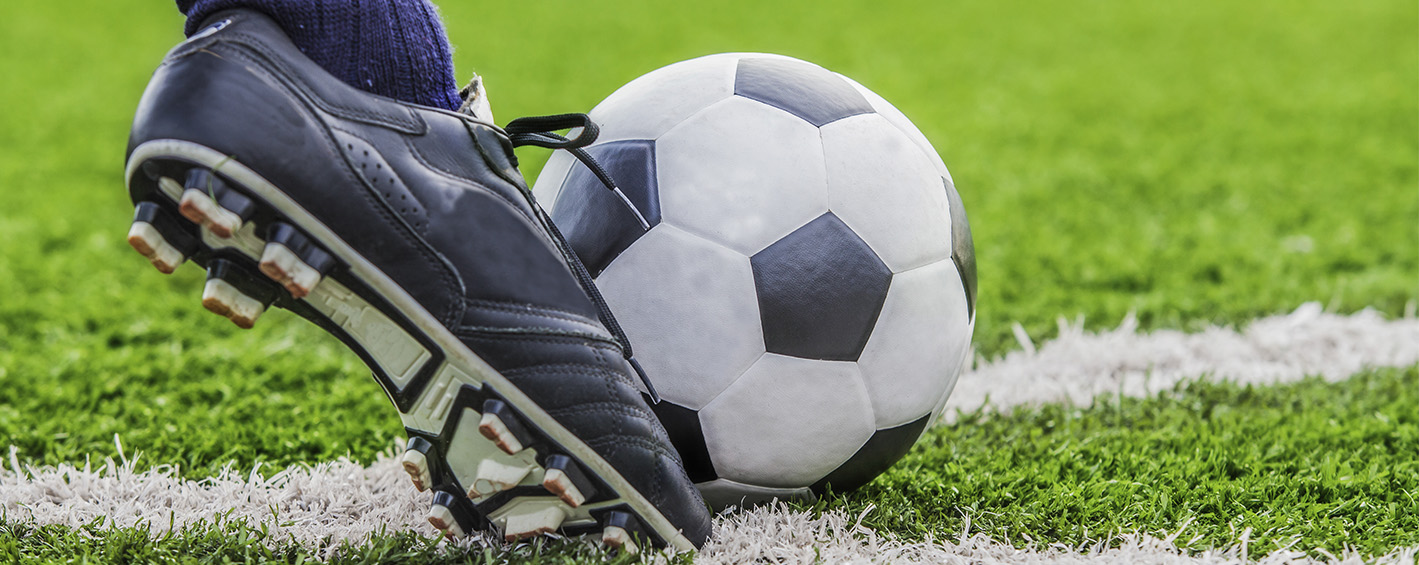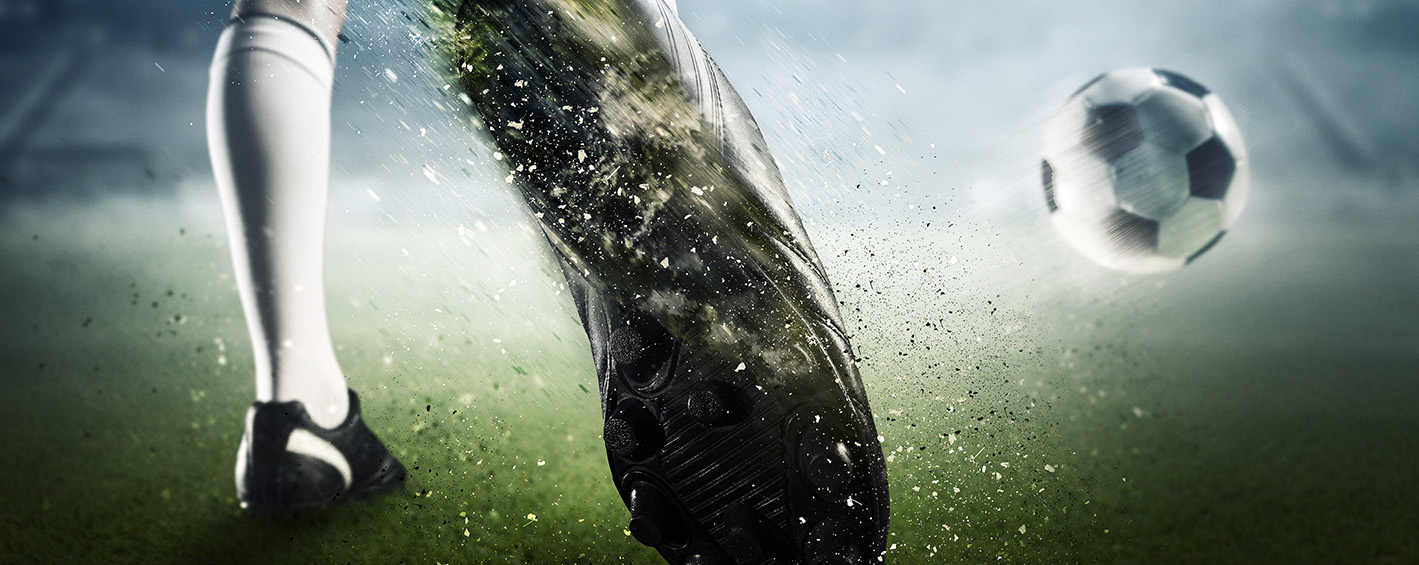Share it
Sometimes you just need to hit the target with accuracy and power. In a youth match hitting the target with power can be the best option. Here is a step-by-step guide to hitting an instep drive.
I watch a lot of soccer games, and one thing I can testify to is how often even top-level pros shoot the ball over the crossbar. And I don’t mean just a foot or two over – the sight of a ball shot way over the bar is not unusual.
This is a particular pet peeve of mine, especially as it is so often avoidable. To me, it indicates that even top players are either unfamiliar with or in some way dismissive of the bread-and- butter soccer shooting technique: the instep drive.
To my mind, too many players, from kids to pros, have been seduced by the allure of the “Upper 90” into thinking they should always go for an aimed shot, usually swerved. That skill is most effective when shooting from an acute angle or from set pieces, but nowadays it is used to the point where many players skimp on mastering the fundamental power shot. In searching too often for that perfect swerved shot, they lose track of the fact that your best chance of scoring is often simply to hit the ball low and on target. If a player uses the power shot with this objective, they not only have a strong chance of direct scoring, but they also create opportunities for scoring by slight mishits, deflections, and rebounds off the goalie or woodwork.

The following is a step-by-step lesson plan for instructing the instep drive. It provides critical skill-building for younger players but will also serve as an effective technical brush-up for players at any level. Remember, soccer players need to work on the technique of their shots just as regularly as tennis players practice their serve, forehand, and backhand technique, or golfers work on the fine points of all parts of their swings!
This sequential instructional session is divided into three stages:
- Sitting
- Standing (without ball, then with ball in hands)
- Kicking with the ball on the ground
The time spent on each part can vary depending on how well the players are mastering each step, but I strongly recommend against skipping any steps. Even when you’re using these sessions as a technical brush-up for advanced players, you should run them through every step in every session, as a step-by-step buildup to (or reminder of) each aspect of correct kicking technique.
As a general rule, I would suggest devoting the first 15-20 minutes of practice following the warm-up to this sequence, over the course of 4-6 practices.
For a 6-session module, the first session can be devoted exclusively to the first stage (sitting with the ball). At the second and third sessions, you should begin with a brief review of the first stage (sitting with the ball), then concentrate for longer on the second stage (standing, first without the ball, then with the ball in hands). At the fourth, fifth, and sixth sessions, you would again briefly review the earlier stages, but spend the lion’s share of the time available for this portion of your practice to actual kicking of the ball on the ground.
Coach feedback to individual players is critical. Be prepared to point out wobbly ankles and toes, unraised hips, missed magic hops, and (especially) crossed legs or raised heads on the follow-through.
Here are the three stages (A, B, C), broken down further into 15 steps:
A: Sitting with the Ball
- Sit with elbows slightly bent, knees bent about 90%, feet on the ground. Hold ball with two hands over preferred foot, with firmly plantar-flexed ankle (ankle locked down, toe pointed firmly down). Using the hip joint, lift leg and foot and touch the ball for one second. (Do not let go of the ball!). Repeat 15-20 times. The instep is the sweet spot, right on the laces.
- With locked ankle, lift foot and gently kick ball straight up, out of your hands, but no more than 1-2 feet in the air. Catch the ball, holding the foot still after the kick (ankle still locked) for at least 1 second. Repeat as necessary.
- Once players can complete step ii under control, with ankle fully locked on both the kick and follow-through, they should try to kick the ball 2 or more times before catching. Ankle should always remain firmly locked.
Coach needs to watch each player to point out floppy ankles and toes.
B: Standing
Without Ball:
- Stand with upper body slightly forward and knees slightly bent. Plantar- flex your preferred foot, with toe touching the ground. This will cause the hip and the heel to elevate two or three inches, to prevent a toe stub.
- Rotate the knee outward, then immediately back in as far as possible. Lock the knee in this inward position, at the same time making sure your hip remains raised. This is called “locking the hip.”
- Gently swing the leg forward from the hip (no backswing). The toe, because of the locked hip, should not touch the ground during the swing. Also because of the locked hip, the only possible direction of the leg is forward. The legs should never cross.
- Practice the full leg swing. Use a big backswing, with the knee bending and the heel almost hitting the buttock on the same side as your preferred foot. Re-lock the ankle and hip (step ii) before each swing and keep them locked to the end of the follow-through. I strongly recommend a small forward hop off the placement foot ( the “magic hop”) at the end of the follow-through – instead of landing on the kicking foot (which many coaches recommend). This hop will maintain body control and keep the placement foot from flailing out to the side during the follow-through. Landing on the kicking foot also restricts the follow-through and makes it harder for the shooter to follow the shot.
With Ball in Hands:
- Plantar-flex the foot with toe touching the ground. Lock the hip. Hold the ball away from the body, chest-high. Lift the leg from the hip and touch the ball on the laces with the ankle locked. Repeat as necessary.
- Same as step v, but kick the ball out of the hands (no more than 1-2 feet in air) and catch. A small ball toss is OK. Keep the ankle locked after kicking. Once that is easy, kick the ball 2 or more times before catching.
C: Kicking (standing with ball on ground):
- Set the placement (non-kicking) foot hip-width away from the ball with the toe alongside the middle of the ball. The placement foot should point in the intended direction of the kick.
- Lock the ankle and the hip. Touch the ball lightly with the instep. Then, with a short and slow backswing and follow-through, kick the ball gently 2 or 3 yards forward. Repeat as needed.
- Take 2 strides back, so the ball is about 2 yards in front of you. Take a 90-degree sidestep to the left (if you are right-footed; to the right if left-footed). This puts you at the ideal angle of approach to the ball for the power kick.
- With the kicking foot, take a small step toward the ball, then jump onto the placement foot so it lands properly aligned alongside the ball. This jump enables the backswing.
- Swing the kicking leg forward to strike the ball, keeping ankle and hip locked and toe down all the way through the follow-through. End the follow-through with a small forward magic hop on the placement foot. The head should stay down till the end of the follow-through. Don’t pull your head up prematurely to see where your shot is going – you’ll mess it up that way!

There are three stages, with 15 steps within them. As mentioned above, it is up to the individual coach to decide how time to spend on each. The coach may also choose to let particularly able students move through the progression more quickly, on a kind of Montessori (advance-at-your-own-rate) principle. But do not skimp on reviewing stages A and B at every session, even when the emphasis will be on actual kicking (stage C).
Be sure that all players are present at the very beginning of every session. At the end of each session, players’ execution doesn’t have to be perfect, but they should have a good mental image of what each stage should look like. Practice on their own is encouraged.